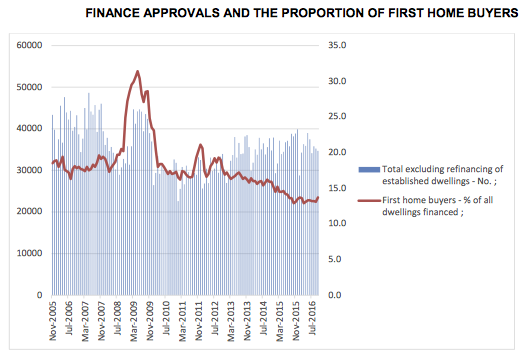REIA calls for action on affordable housing and property taxation
Contact
REIA’s Pre Budget Submission to Government focuses on taxation as it relates to property and the need for a holistic approach and housing affordability including the need to address the rapid decline in the number of first home buyers.
The Submission notes that dwelling investment supported by historically low interest rates has been a significant contributor to growth in the Australian economy since 2013/14. Australia’s property industry has been a main driver of economic growth and increased employment in the transition away from a decade-long reliance on mining. Providing a stimulus to economic activity outside the mining sector, including the housing and building sectors, was amongst the main reasons for the RBA to keep the official cash rate at record low levels since August 2013.
“It is against this background that REIA’s Pre Budget Submission for 2017/18 is framed and seeks Government action to facilitate further sustained growth in the property sector which is critical to the Australian economy”, said REIA President Mr Malcolm Gunning.
“Whilst investor activity in housing has in large part been responsible for the supply response from the building sector contributing to economic growth, this has been at the cost of first home buyers and their ability to enter the housing market. The number of first home buyer commitments as a proportion of total owner-occupied housing finance commitments in November 2016 was 13.8 per cent and compares to long run average of 18.5 per cent.”
“Since April 2012, when official interest rates were 4.25 per cent compared to the current 1.5 per cent, the number of home loans issued to home buyers increased by 25 per cent while the participation of first home buyers declined by 17 percent. This decline is despite ten cuts in the official interest rate over that period”, added Mr Gunning.
“This is why we are asking the Federal Government take a leadership role in urging all states and territories to take the same approach to the provision of assistance to first home buyers regardless of whether the dwelling is new or established as well as allowing first home buyers access to their superannuation for the purchase of a home”.
“Strong population growth in Australia as well as changes in the demographic composition necessitates that the supply of affordable housing is addressed as a priority policy issue. ABS population projections show net overseas migration is expected to make a stronger contribution to population growth in future years than it has in the past.”
“We are also urging the Federal government to show leadership in addressing housing affordability by taking a co-ordinated and holistic approach of all levels of government in objectively addressing all property taxes.”
“Stamp duties, for example, are a major hurdle for first home buyers and older home owners. For first home buyers stamp duty often makes the difference between the ability to buy and not to. For older home owners considering down sizing to accommodation more suited to their needs in retirement stamp duty is frequently given as the reason preventing such a move”.
“Stamp duties are also preventing a more efficient use of the housing stock and are exacerbating the supply problem”.
“We need to move away from the myopic preoccupation with negative gearing as if it’s the panacea for housing affordability in our two largest capital cities. This is simply not the case. It is high time that all property taxes are examined,” concluded Mr Gunning.
See also:
A glimpse into a new success story in Niseko’s real estate development
Affordability worsens as bigger mortgages erode benefits of lower rates
Demographia report links lack of affordable housing to rise of populism






